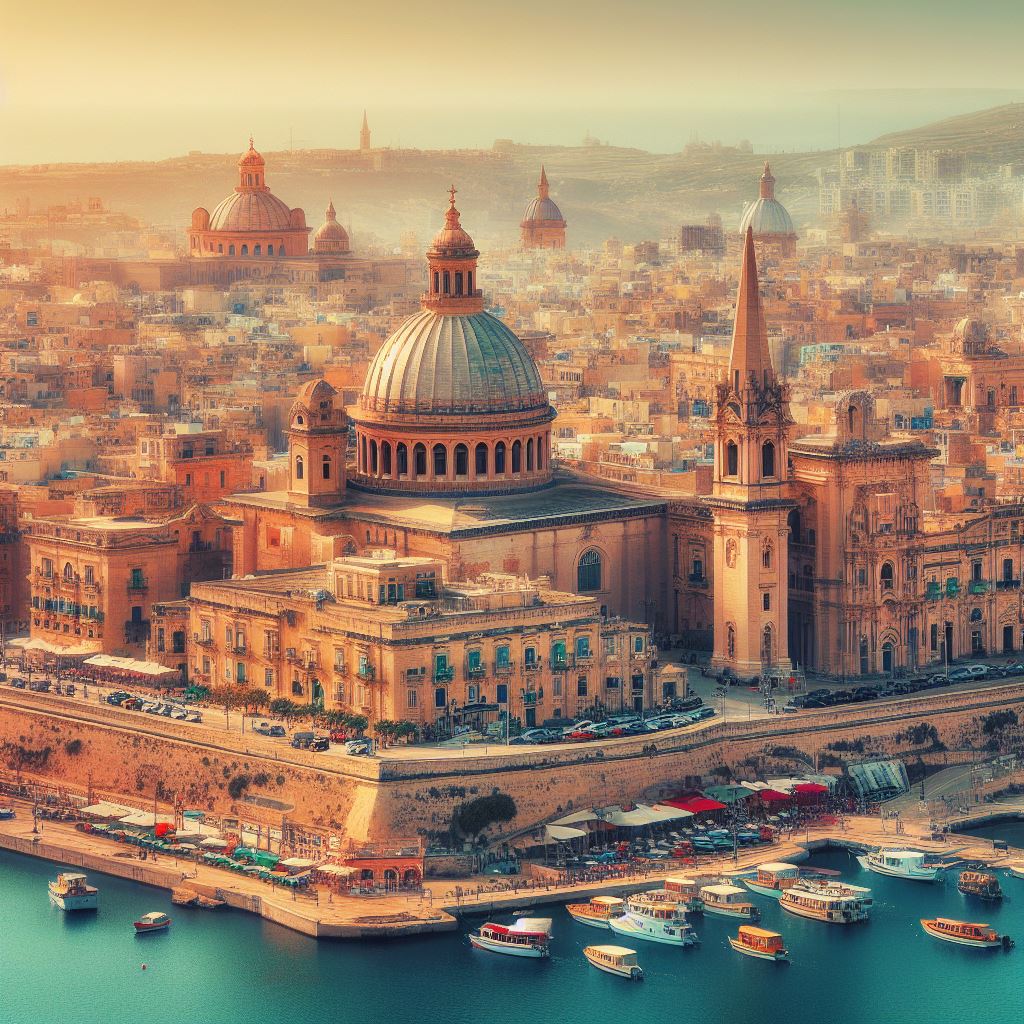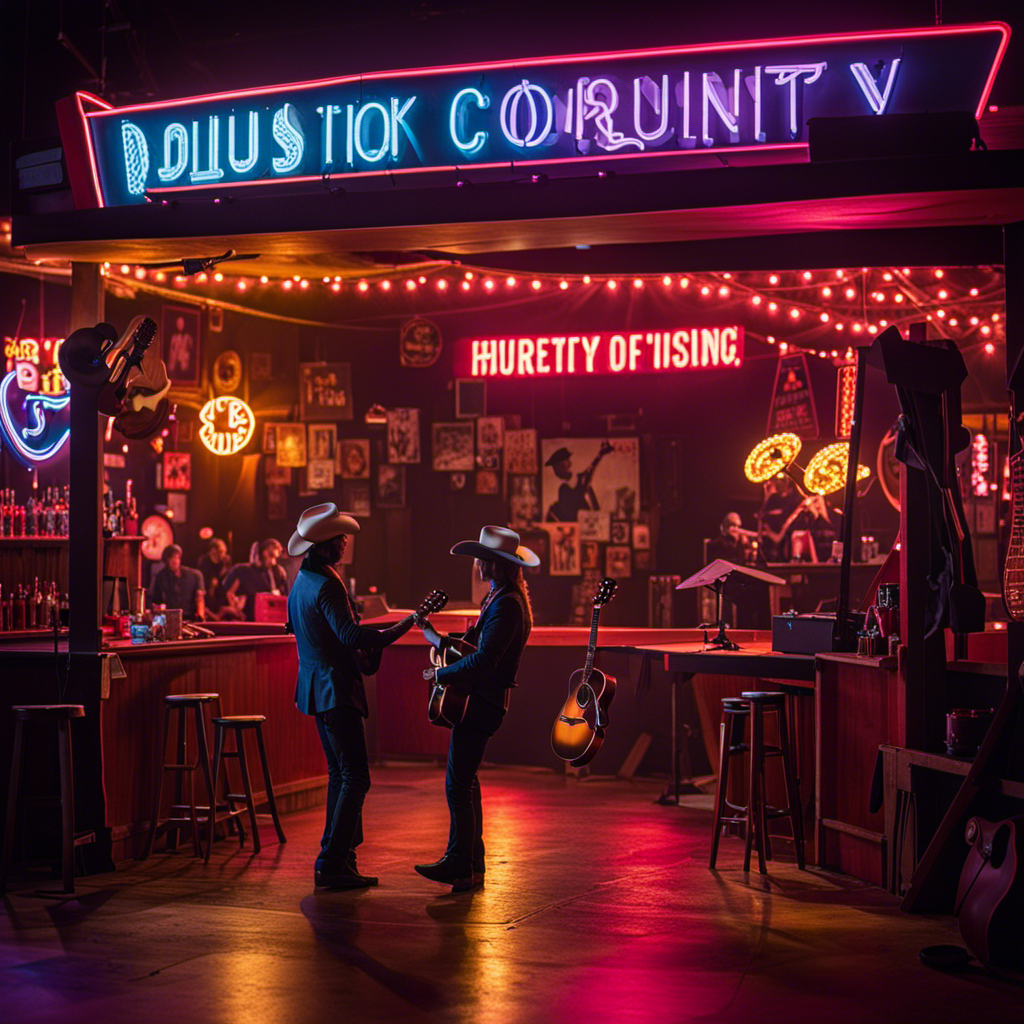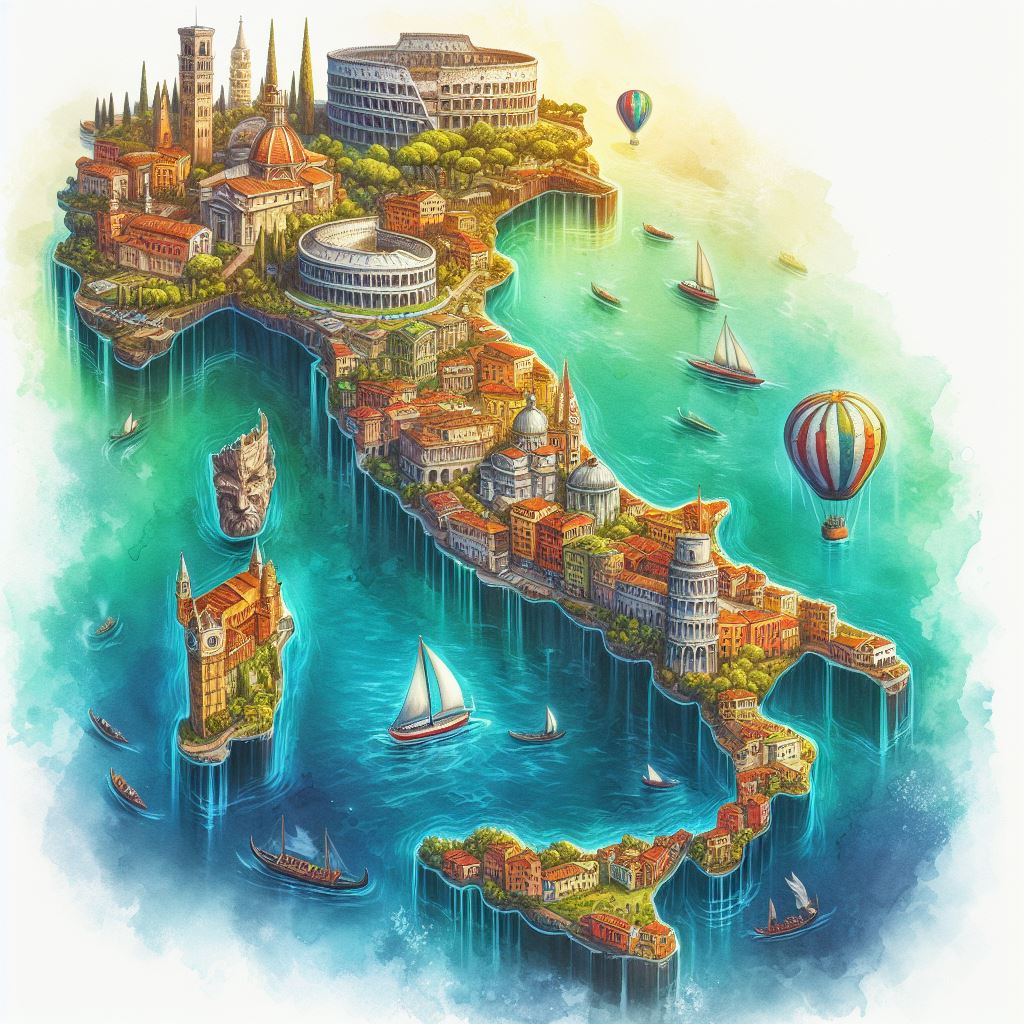Malta fun facts: this tiny island country packs a punch! From ancient temples to gorgeous diving spots, get ready for 50+ fascinating tidbits on Maltese history, culture, landmarks and more. This quick guide has everything you need to become an expert on one of Europe’s most captivating destinations.
Malta may be one of the world’s smallest countries, but this island nation in the Mediterranean Sea has tons of amazing history, culture, natural beauty, and fun experiences packed into its 122 square miles.
Located between Sicily and North Africa, Malta has been influenced by many civilizations throughout its long history – from the ancient Phoenicians and Romans to the Arabs, Crusading Knights, and British. This unique heritage can be seen in its prehistoric temples, baroque architecture, colorful fishing villages, and more.
Beyond its rich past, Malta boasts stunning natural landscapes from its iconic coastal cliffs to secluded turquoise bays and grottos. Its pleasant climate, crystal-clear waters, and affordability make it a popular budget-friendly destination.
Let’s dive into some of the most fascinating and fun facts about this small but mighty island country!
Malta’s Size Belies Its Extensive History
Malta may only be 316 sq km (122 sq mi) in total area, making it one of the world’s smallest and most densely populated countries. But its strategic location in the Mediterranean Sea allowed it to be inhabited and dominated by various powers throughout history.
- Malta has been ruled by the Phoenicians, Greeks, Romans, Arabs, Normans, Knights of St. John, French, and British before gaining independence in 1964. The Maltese language today reflects this diverse past, being the only Semitic language written in the Latin alphabet.
- The earliest human inhabitants date back to 5200 BC – hundreds of years before the building of the Pyramids of Egypt and Stonehenge! Some of the world’s oldest free-standing structures are Malta’s megalithic temples like Ħaġar Qim and Mnajdra built between 3600-2500 BC.
- Despite its small size, Malta played a significant role in World War II due to its prime location. It was heavily bombed by Axis and Allied forces though it remained neutral for most of the war. The country was awarded the George Cross for its bravery during the Siege of Malta.
Clearly, this tiny island has witnessed many centuries of history and occupation by foreign powers!
Malta Boasts Striking Natural Landmarks
In addition to its rich cultural heritage, one of Malta’s main attractions is its wealth of natural landscapes – from towering coastal cliffs to secluded bays and grottos.
- The natural arch of the Azure Window on Gozo island was one of Malta’s most iconic landmarks until it collapsed in 2017. But visitors can still admire the beautiful coastline of Dwejra Bay where it stood.
- Malta’s western coastline has breathtaking seaside cliffs and deep blue grottos like Fungus Rock on Gozo Island. The famous Blue Grotto near Zurrieq has brilliant blue waters where you can take a boat tour and go swimming.
- Golden Bay and Għajn Tuffieħa Bay are two of Malta’s most popular sandy beaches, surrounded by countryside and offering water sports. Quieter rocky coves like St Peter’s Pool are ideal for snorkeling and swimming.
- Comino Island between Malta and Gozo has stunning blue waters – especially at the secluded Blue Lagoon bay, perfect for lounging on the sandbar or snorkeling with fish.
With year-round Mediterranean temperatures, Malta is a beach lover’s paradise!
Malta’s Cities Blend History and Vibrant Culture
Malta’s cities, especially the capital Valletta, showcase the island’s history with sites like medieval fortresses and ornate Baroque cathedrals. But they also have a vibrant, cosmopolitan energy with cafes, markets, and events.
- Valletta contains 320 monuments within its city walls! Top sights include Saint John’s Co-Cathedral and its ornate interiors, the Grandmaster’s Palace, and Upper Barrakka Gardens offering amazing panoramic views.
- The medieval fortified city of Mdina, Malta’s old capital, is called the “Silent City” for its tranquil, atmospheric streets. Its cathedral and bastion walls offer scenic outlooks over the island.
- Cottonera or the Three Cities has fortified cities like Vittoriosa and Senglea with historic churches, maritime museums, restaurants and shops with an authentic local vibe.
- Marsaxlokk fishing village is a photogenic spot with its colorful traditional boats, seafood eateries, and large open-air market along the harbor.
With festivals, nightlife, diverse eateries, and entertainment, Malta offers a great urban experience for tourists.
Malta Has Unique Local Traditions and Cuisine
Beyond its historic sites and natural beauty, Malta has its own culture and customs for visitors to experience.
- Traditional Maltese food reflects the island’s cultural fusion with influences from Sicily and North Africa. Local specialties include rabbit stew, bragioli (beef rolls), pastizzi (savory pies), goat cheese, ġbejniet (sheep’s milk cheese), and local wine.
- Malta has its own carnival celebrations each February leading up to Lent, with elaborate floats and costumes similar to Venice. Participants let loose to celebrate before the 40-day fast.
- Lace making and glass blowing are traditional local crafts that are still practiced on the island today. Visitors can pick up handmade souvenirs like lace fans or ornaments.
- The festa is an important celebration dedicated to each village’s patron saint. Festas include street decorations, processions, fireworks, food stalls – uniting communities in celebration.
- Maltese culture blends Sicilian, Italian, and Arabic influences. Most natives are Roman Catholic but speak a Semitic language due to rule by the Arabs from 870-1090 AD.
Immersing yourself in Malta’s local culture is a highlight that gives insight into daily life on the islands.
Malta is an Affordable Mediterranean Destination
Malta has plenty to offer visitors beyond its rich history, culture, and natural scenery. With an arid subtropical climate, it makes an affordable and popular destination for European travelers.
- Malta enjoys mild, sunny weather year-round so it’s easy to plan a trip any season. Summers are hot and dry while winters are mild, with limited rainy periods.
- Flights and accommodation in Malta tend to be cheaper compared to other European countries. It’s a budget-friendly destination once you arrive.
- Activities like scuba diving, snorkeling, sailing, and rock climbing allow visitors to enjoy the islands’ beautiful clear waters. On land, you can hike, bike, or jeep tour to see panoramic coastal views.
- Malta has a lively nightlife scene, from bars and clubs in Paceville to more laidback wine bars in Valletta. The café culture invites relaxing outdoors people watching.
- Malta hosts plenty of annual cultural festivals from jazz and arts to food and historical reenactments. There’s usually something exciting happening year-round.
With so much packed into such a small country, Malta makes the perfect Mediterranean trip without breaking the bank!
Conclusion
From UNESCO World Heritage Sites to crystal-clear dive spots, sandy beaches, and buzzing nightlife, Malta has something to offer every type of traveler. Though it may be one of the smallest countries in the world, Malta’s rich history spanning over 7,000 years, fusion culture, and stunning landscapes provide endless fascination.
Whether you’re interested in World War II history, Baroque architecture, water sports, or just relaxing in the Mediterranean climate, Malta should be on your bucket list! Its affordability and proximity to Europe make this tiny island nation the perfect budget-friendly vacation spot.
So next time you’re looking for an out-of-the-ordinary European destination, look no further than the gems scattered across Malta and Gozo. Let the “Silent City” of Mdina transport you to the Middle Ages, then laze on Golden Bay beach before digging into fresh-caught seafood in Marsaxlokk as the sun sets. Malta will show you there’s so much adventure to be had in such a small place!
Getting to Know the Charms of Malta: Frequently Asked Questions
Malta is an exciting Mediterranean destination that offers visitors a unique blend of history, culture, landscapes, and affordability. If you’re considering a trip to this small island nation, you probably have some questions. Here we answer some of the most frequently asked queries about experiencing Malta’s many charms.
Q: What is the best time of year to visit Malta?
A: One of the great things about Malta is that its mild climate makes it a year-round destination. However, late spring and early fall may be the optimal times, when rates are lower and crowds are smaller. Summers can be very hot while winters get occasional rain.
Q: What is there to see and do in Malta?
A: Malta offers an incredible diversity of attractions. Explore UNESCO sites like the medieval city of Mdina. Go swimming and boating in scenic bays and grottos. Tour Grand Masters’ palaces, cathedrals, temples and more. Don’t miss lively village festas with fireworks and food.
Q: How many days do you need to properly see Malta?
A: To experience Malta’s top highlights, we’d recommend at least 4-6 days. This will allow you to see cities like Valletta, museums, beaches, temples and take a ferry trip to Gozo island. For a more relaxed exploration, plan on a full week.
Q: What cuisine and drinks should I try in Malta?
A: Malta’s food reflects many cultural influences. Try traditional rabbit stew, bragioli beef rolls, goat cheese, local wines and ales. Don’t miss their variations of Italian classics like pizza and pasta too.
Q: Is Malta an expensive destination?
A: No, Malta offers an affordable Mediterranean getaway! Budget flights are available from many European cities. Public transportation is cheap, and you can find good lodging values from hotels to Airbnbs.
Q: What language do they speak in Malta?
A: Maltese and English are the two official languages. Maltese is the national language, which has origins in Arabic but uses a Latin alphabet. Most Maltese also speak very good English.
Q: Is Malta safe for tourists?
A: Yes, Malta is a very safe destination for travelers and has low crime rates. As with any destination, just use common sense precautions as you would at home.
We hope this Malta travel FAQ helps you gain insight for planning your ideal trip! Be sure to explore the rest of our blog for more tips on experiencing this fabulous island nation. Let the adventures begin!





